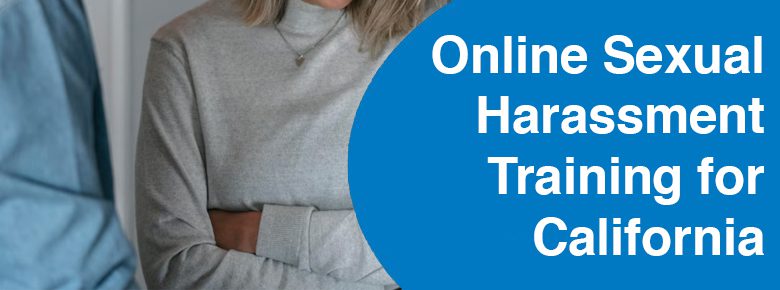
Understanding California’s Sexual Harassment Training Requirements
- natec
- June 16, 2023
- 9:54 am
- No Comments
Introduction:
California has implemented mandatory sexual harassment prevention training for all employees in an effort to create a safe and respectful workplace environment. It is crucial for employers to understand these training requirements and ensure compliance. This article will provide an overview of California’s sexual harassment training law, answer frequently asked questions, and discuss important obligations under the law.
California’s Sexual Harassment Training Requirements
Under the California Code, employers with a minimum of five employees or contractors are obligated to provide sexual harassment prevention training every two years. This requirement applies to both supervisory and nonsupervisory employees. The training duration must be at least one hour for nonsupervisory employees and two hours for supervisory employees. Additionally, the training must cover specific content as specified in the Code.
Content of the Training
The sexual harassment prevention training in California should cover the following topics:
- Definition of sexual harassment under Title VII and FEHA
- Applicable federal and state statutes and case law
- Types of conduct constituting sexual harassment with practical examples
- Definition of “abusive conduct” under state law
- Prevention strategies for harassment and abusive conduct
- Prevention of harassment based on sexual orientation, gender identity, and gender expression
- Duty of supervisors to report harassment
- Protocol for handling harassment accusations against supervisors
- Limited confidentiality of the complaint and investigation process
- Assessment of learning through questions and skill-building activities
- Remedies and resources available to victims of sexual harassment
- Employer’s responsibility to correct harassing behavior
- Inclusion of the employer’s anti-harassment policy, which employees must read and acknowledge receipt of
Additional Training Recommendations
While not required, California law encourages employers to provide bystander intervention training. This training equips employees to recognize and take action against problematic behaviors in the workplace. It helps create a supportive environment and offers resources for intervention and support.
Retraining and Documentation
- Do employees trained elsewhere need to retake the training?
If an employee or supervisor received compliant training at another employer within the past two years, they are not required to retake the training. However, employers must provide a copy of their anti-harassment policy to new employees within six months of hire.
- When should employees be retrained?
Employees must receive sexual harassment training once every two years. Employers can establish a two-year training cycle or use individual tracking to determine retraining requirements.
- What documentation must employers maintain?
Employers are required to keep documentation related to employee training for at least two years. This includes records of trained employees, training dates, sign-in sheets, certificates of attendance, training materials, and the name of the training provider.
Other Harassment-Related Obligations in California
Apart from sexual harassment training, employers in California have other obligations to prevent workplace harassment:
- Displaying required workplace posters related to discrimination and harassment
- Distributing the DFEH Sexual Harassment Fact Sheet to all employees
- Adopting and distributing a written discrimination and harassment prevention policy
- Staying informed about recent harassment-related updates in California law
FAQs About California’s Sexual Harassment Training Law
1. Which employers are covered by California’s sexual harassment prevention training law?
California’s training law applies to employers with five or more employees or contracted individuals working within the state.
2. When should new employees and new supervisors be trained?
New employees must receive sexual harassment training within six months of hire, while new supervisors should be trained within six months of assuming their supervisory position.
3. Who needs to be trained?
All employees and supervisors in California must undergo sexual harassment prevention training. Although independent contractors, volunteers, and unpaid interns are not legally required to be trained, it is recommended to provide training to ensure a harassment-free workplace.
4. Are temporary and seasonal employees required to be trained?
Yes, even temporary and seasonal employees must receive sexual harassment prevention training. The training should be provided within thirty calendar days from their first day of work or within the first 100 hours worked, whichever occurs first. If the employees are provided by a temporary staffing agency, the agency is responsible for their training.
5. Is there a specific length requirement for the training?
Yes, the training should be at least one hour for nonsupervisory employees and two hours for supervisory employees.
6. Can the training be completed online?
Yes, the training may be completed online, as long as it meets the required e-learning standards and duration. It can also be divided into shorter segments, as long as the overall time requirement is met.
Conclusion:
Complying with California’s sexual harassment training requirements is crucial for employers to maintain a safe and respectful workplace. By providing comprehensive training, employers can foster a culture of respect, prevent harassment, and protect themselves from potential liability. It is important to stay up-to-date with the law and ensure that training materials and policies are regularly reviewed and updated. If you’d like to enroll in NATEC’s California Online Sexual Harassment Training for Non-Employees, visit the following link: https://natecintl.com/courses/online-cal-osha-sexual-harassment-in-the-workplace/

